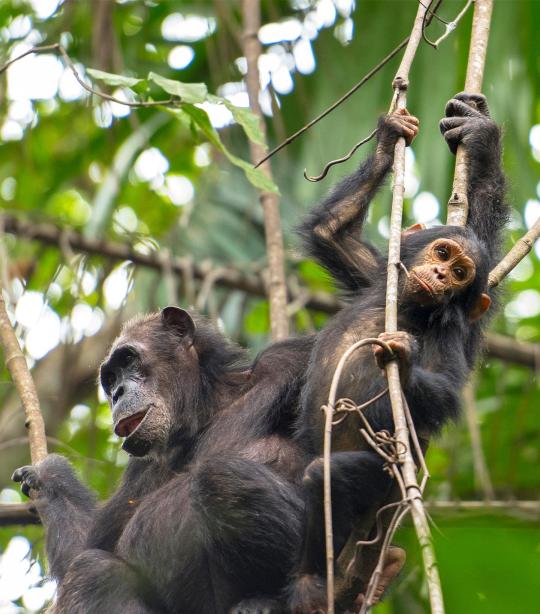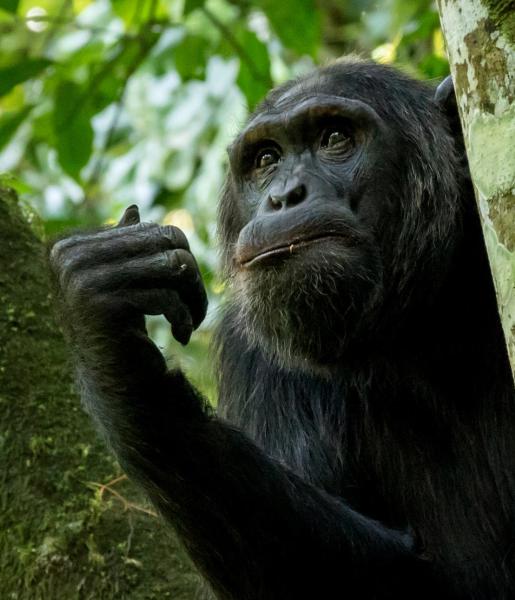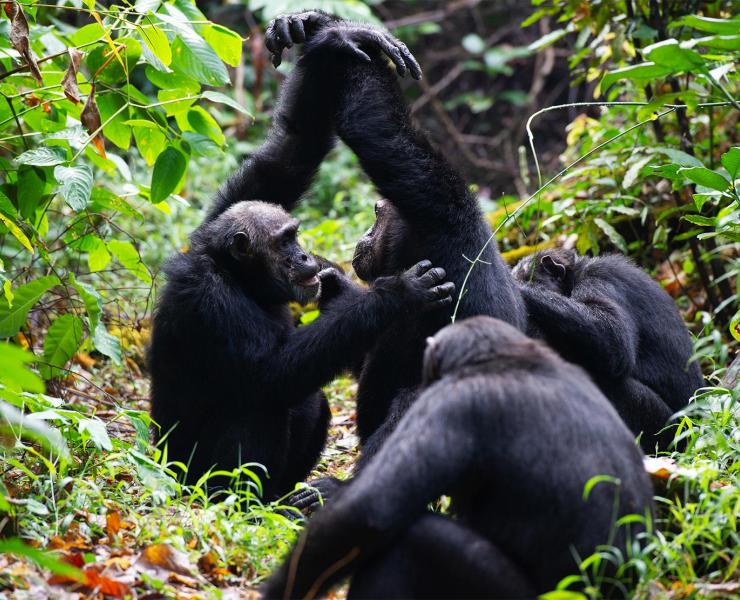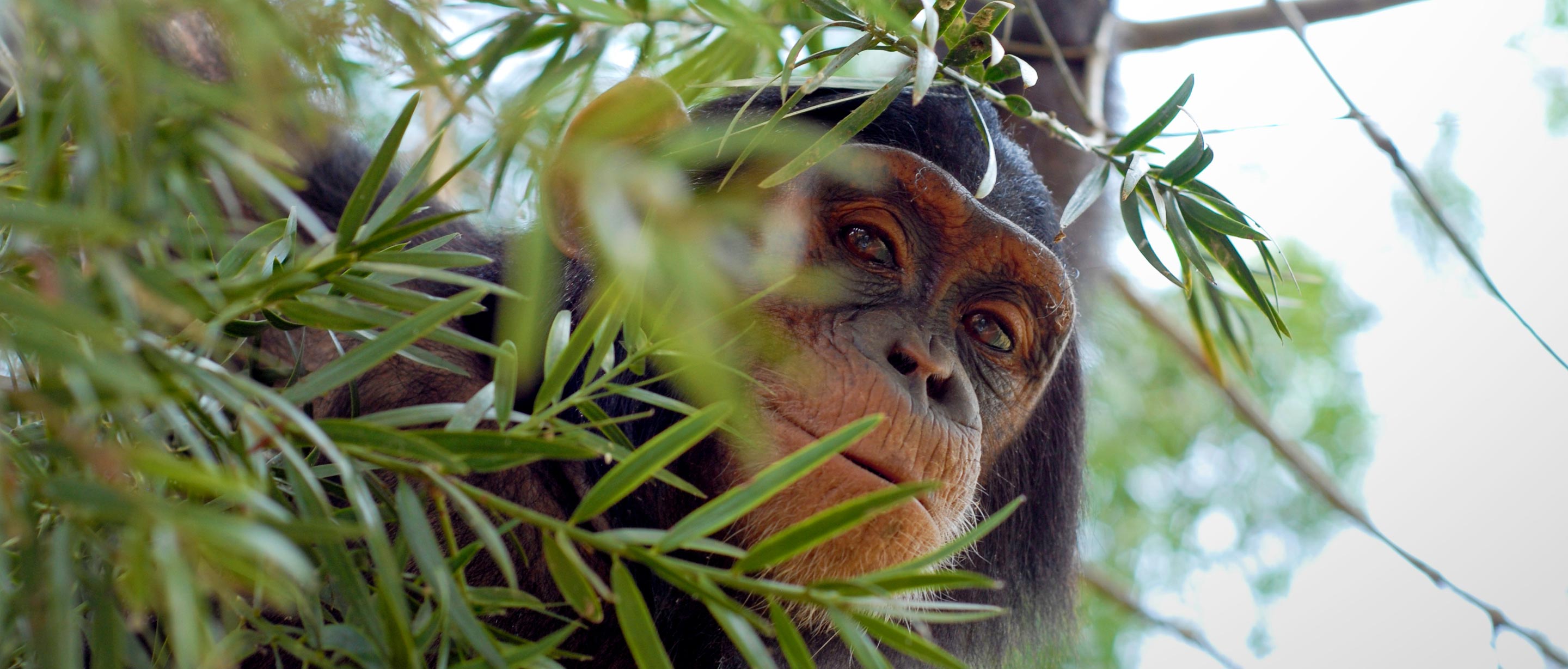What are chimpanzees?
There are four subpopulations of the chimpanzee — the western chimp, the Nigeria-Cameroon chimp, the central chimp, and the eastern chimp. This great ape is one of our closest relatives, sharing about 98 percent of their genes with us. They have thickset bodies with short legs, opposable thumbs, no tails, and long arms that are 1.5 times their height that extends beyond their knees. Much of their body is covered with long black hair, but the face, ears, fingers, and toes are bare.
Pan troglodytes
25 to 70 kilograms (57 to 154 pounds)
About 1 to 2 meters tall (3 to 5.5 feet)
Unknown but estimated to be up to 50 years
Forests, lowland forests, swamp forests, savanna woodland
Omnivorous
6 to 8 months
Humans and leopards

Challenges
Chimps are losing their homes.
The number of chimps in the wild is steadily decreasing. One of the main causes is the alarming rate at which forests are cut down for farming, settlements, and other activities.
The chimpanzee is hunted for bushmeat.
While bushmeat has always been a popular source of dietary protein for local communities, the scale of hunting has increased dramatically, and the activity has become heavily commercialized with much more of the meat now going to urban residents.
Solutions
Our solutions to protecting the endangered chimpanzee:
AWF engages communities living near chimps to create sustainable practices for agricultural and settlement growth by providing training on best practices and incentivizing conservation when appropriate.
African Wildlife Foundation works with local communities to provide education, and at times, incentivize conservation. For example, we built Lupani School — a conservation school in the Sekute community. AWF agreed to work with the community on the grounds they would practice sustainable agriculture and conserve their local wildlife. Also, conservation is built into the school’s curriculum to teach younger generations about protecting their wildlife.


Behaviors
The chimpanzee is the mammal most like a human.
They are intelligent, curious, noisy, and social. Chimps live in loose communities which can number anywhere from ten to more than 100 individuals. They can share a home range that they protect from intruders and will sometimes forage for foods in groups. They exhibit complex patterns of behavior, many of which are learned, and can solve problems, plan for anticipated events, as well as make and use tools. They have even been seen utilizing medicinal plants for a variety of ailments.
They enjoy spending time together.
Chimps touch each other a great deal and may kiss when they meet. They also hold hands and groom each other. An adult often has a special companion with which it spends a lot of time. The strongest relationships within a community appear to be between adult males. They tend to spend a great deal of time together and will groom one another four times as much than females. Female chimps give their young a great deal of attention and help each other with babysitting chores. The older individuals in the group are usually quite patient with energetic youngsters — not unlike grandparents. An important social activity in their societies is social grooming. Not only does grooming help remove ticks, dirt, and flakes of dead skin from the hair, but it also helps establish and maintain social bonds.
They can use tools.
Chimps have opposable thumbs and a firm grip. This allows them to pick up objects and use “tools” for certain purposes.
Diet
Chimps are not picky eaters.
After descending from their night nests in the trees, they hungrily feed on fruits, their principal diet, and on leaves, buds, and blossoms. After a while, their feeding becomes more selective, and they will choose the ripest fruit. They usually pick fruit with their hands, but they eat berries and seeds directly off the stem with their lips. Their diet consists of up to 80 different plant foods, and they will spend anywhere from six to eight hours per day foraging for food. Sometimes, they will supplement their diets with meat, such as young antelopes or goats. Their most frequent victims, however, are other primates, such as young baboons, colobus monkeys, and blue monkeys.
Habitats
Where do chimpanzees live?
Chimps have the widest geographic distribution of any great ape, with a range of more than 2.6 million kilometers. They can be found discontinuously from southern Senegal across the forested belt north of the Congo River to western Uganda and western Tanzania. Gombe National Park in Tanzania is the first park in Africa specifically created for chimpanzees.



